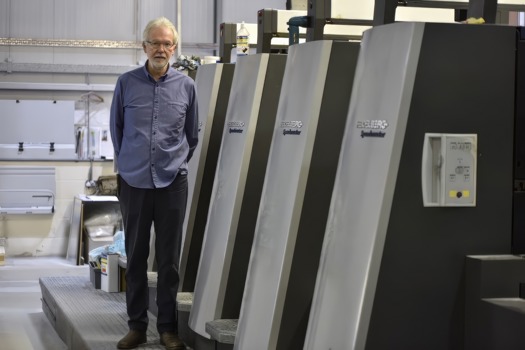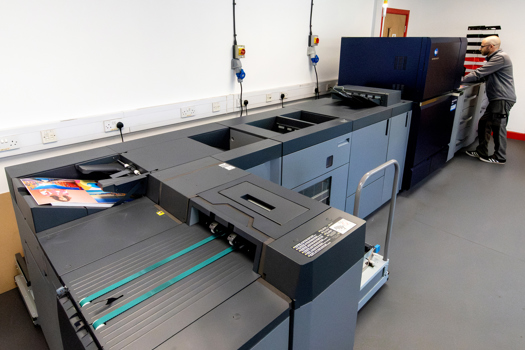According to Tharstern managing director Keith McMurtrie, it is the most advanced JDF integration the firm has completed.
Lynx has linked its Komori presses via K-Station and its Screen pre-press department via the Trueflow workflow with its MIS, providing two-way communication.
"The ultimate goal was to automate as much as possible," said Lynx dpm technical director Nigel Clark. "The first step was to automate the transfer of PPF [pre-setting data] to the press. We used to get press minders in pre-press looking for PPF data and you'd get pre-press operators forgetting to do the PPF."
The move to JDF has proved to be a virtuous circle for Clark.
"The goal was to automate, but one side-effect has been getting more information that we didn't set out to capture," he explained. "Now we've got more accurate information we can do more to automate where before we didn't have the parameters."
The benefits have come without tying operators up with the need to account for their time as the system logs processes automatically.
"Operators don't need to learn new skills to get more out of the system, it's written to improve productivity," said Clark.
He added that information provided has also been more accurate than the manual data collection from pre-press and the presses.
"We do reports every month, if an operator puts something in incorrectly it will mess up all the stats if the information comes from the machine you know it's right," said Clark.
Although he said it was too early to comment on cost savings achieved from the JDF integration, Clark said that the firm has already shaved 20% off pre-press times, which was highlighted by Tharstern.
The firm's next move will be to further automate and JDF network its bindery and expand its digital print operation. This autumn it will take delivery of a Xerox iGen3, which will join a Xerox DocuTech and move it into the colour digital market. The iGen3 will replace a four-colour Heidelberg Speedmaster 52.
"We have a litho machine near the end of its life and the work it produces short-run book covers for test marketing and scientific and technical covers is suitable for digital," said Clark. The new stitcher will be an automated and JDF compatible machine.
Story by Barney Cox
Lynx uses MIS JDF to integrate plant
Lynx dpm, the Oxfordshire-based book and journal printer, has integrated its pre-press and presses with a Tharstern MIS using JDF.






